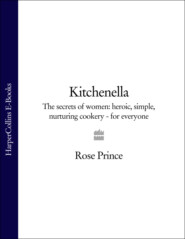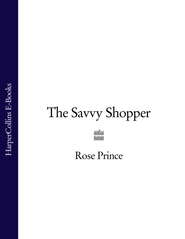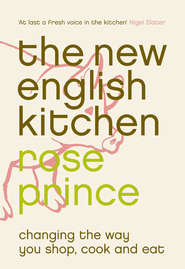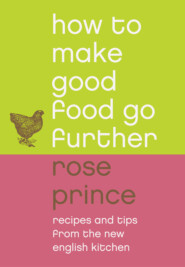По всем вопросам обращайтесь на: info@litportal.ru
(©) 2003-2024.
✖
The New English Table: 200 Recipes from the Queen of Thrifty, Inventive Cooking
Настройки чтения
Размер шрифта
Высота строк
Поля
Olive Oil (#litres_trial_promo)
The Lost Kitchen (#litres_trial_promo)
Ox Tongue (#litres_trial_promo)
Oysters (#litres_trial_promo)
Partridges (#litres_trial_promo)
Peas (#litres_trial_promo)
Pheasant (#litres_trial_promo)
Pistachio Nuts (#litres_trial_promo)
Pomegranates (#litres_trial_promo)
Pork (#litres_trial_promo)
Potatoes (#litres_trial_promo)
Prawns and Shrimps (#litres_trial_promo)
Quince (#litres_trial_promo)
Rabbit (#litres_trial_promo)
Radishes (#litres_trial_promo)
Rice – Short Grain (#litres_trial_promo)
Rice – Long Grain (#litres_trial_promo)
Roots (#litres_trial_promo)
Roses (#litres_trial_promo)
Runner Beans (#litres_trial_promo)
Sardines (#litres_trial_promo)
Sausages (#litres_trial_promo)
Scallops (#litres_trial_promo)
Squash and Pumpkin (#litres_trial_promo)
Sweetbreads (#litres_trial_promo)
Tea (#litres_trial_promo)
Tomatoes (#litres_trial_promo)
Trotters and Knuckles (#litres_trial_promo)
Rhythms of Dinner and a Time to Eat Soup (#litres_trial_promo)
Turkey (#litres_trial_promo)
Veal (#litres_trial_promo)
Watercress (#litres_trial_promo)
Wheat (#litres_trial_promo)
Wild Salmon (#litres_trial_promo)
Woodpigeon (#litres_trial_promo)
Bibliography and Sources (#litres_trial_promo)
Index (#litres_trial_promo)
Acknowledgements (#litres_trial_promo)
About the Author (#litres_trial_promo)
About the Publisher (#litres_trial_promo)
Introduction (#ulink_0f60e6f6-7819-5594-9cf3-571f27429b14)
My one table is two tables. Mostly it is an everyday table, a busy junction where plates arrive and leave, sometimes in a hurry, sometimes late. But they leave empty, I hope. Food for every day might be an economical bean and herb soup; juicy threads of braised ham hock beside a pile of buttery potato, or something good rehashed from something left over. But every now and then we sit at the ‘other’ table, for a weekend lunch or dinner, supper with others or a seasonal feast. Then we eat dishes cooked with ingredients that are more luxurious and precious: a whole baked Cornish fish, or roast game birds; a dish of new-season asparagus and pea shoots; a creamy pudding piled with summer berries and decorated with flowers.
It is a rhythm of eating that I enjoy. I have been good, so I can be bad; some meals are tempered, so others can be rich. It rejuvenates the old concept of ‘fast and feast’ and has become quite natural. But oscillating between those dishes of leftovers, cheap cuts and humble raw materials on the one hand and richer meals based on more valuable ingredients on the other is not just a feel-good diet; it forms part of a solution to a wider predicament.
There is a strong bond between good human health and the health of the environment. What you choose to eat has both an intrinsic and an ecological impact. If, in place of eating fillets of chicken, you decide to cook a whole chicken, eat the meat, then make an ambrosial broth from the bones to use in a creamy soup scented with tarragon, you can afford to buy a traditionally reared bird that has been fed on natural forage. Feeding chickens grass rather than cereals not only saves considerable quantities of fossil fuel (used in fertiliser and processing) but also benefits you: grass-fed livestock have a higher proportion of essential fatty acids in their meat, which are good for heart health and help guard against becoming overweight. There is also the diversity factor in this equation. As well as reducing uneconomic waste, recycling food left over from other meals encourages the use of many more appetising ingredients, such as herbs, salad vegetables and pulses. Growing a greater variety of crops and so eating a more diverse diet is again a plus for both people and planet. The meals on our table form part of a cycle that can, collectively, make a positive difference.
Currently, the main challenges and threats we face are food related. ‘Peak oil’ – the point after which demand for fossil fuels outstrips supply – has pushed food prices up, and inflation on some foods is now as high as 20 per cent. Rising levels of obesity are costing the National Health Service an estimated £1 billion per year; in children the obesity epidemic is especially tragic and poignant. But in our own warm kitchens, we can go some way to addressing issues that the authorities seem uninspired, or politically afraid, to deal with.
The problem of methane-emitting food waste and higher prices can be tackled by turning, say, some surplus cooked beef into a rich braise, enlivened with puréed tomatoes, red wine, garlic and thin shreds of wild fungi, to eat with buttered pasta ribbons.
One answer to the peak oil question lies in an earthily delicious dish of home-grown purple sprouting broccoli and tender green lentils, both of which are crops with a low environmental impact.
Given the known benefits of eating a more diverse menu than red meat, white bread and King Edwards potatoes, poor diet can be addressed by exploring a wider variety of foods, trying new types of grain, sprouted seeds and leafy green vegetables. We can do good by choosing from battalions of pretty squashes, rare potato and apple breeds, less familiar seafood and game birds – even edible flowers. If any of the above were medicine, it would taste of honey and lemon.
But what to put on the table … what is English, or British? A peculiar aspect of our progress over centuries, during which artists have created works of genius and scientists have developed life-saving cures, is that the English larder has become culturally primitive. Once we were imaginative and knowledgeable about the art of food, and more democratic in the share of it. Now, the majority paint by numbers in crude colours.
So this is a book of ingredients: how and when to buy them, all the many things that can be made with them and, in many cases, how to use up what is left. There is an economic divide between the foods listed. Some are obvious candidates for an occasional feast, others plainly everyday items. Some fall between the two – they can be cheaper to buy in a glut moment, or depending on where you live. Many are recognisably home grown – beef, Cheddar, wheat and watercress, for example. Some are produced here but are underexploited – sardines, sweetbreads, barley and rabbit. Others could be grown here commercially but are not – buckwheat, lentils, quince and chestnuts. Others cannot be produced here but are non-controversial imports embedded in our history – olive oil, tea, lemons and rice. All these foods belong here, or were English once. Have confidence. There’s no need always to look to the Mediterranean for something good.









